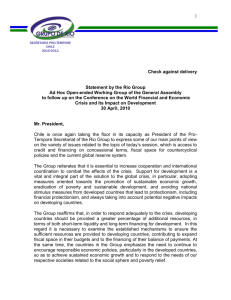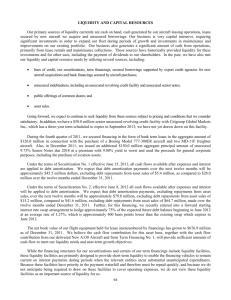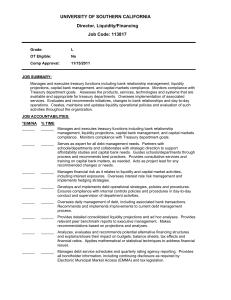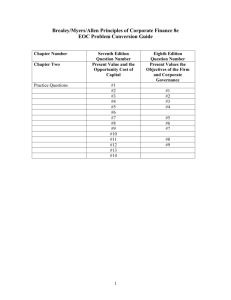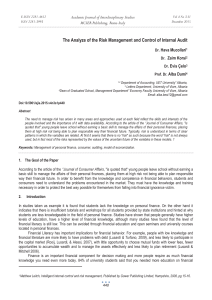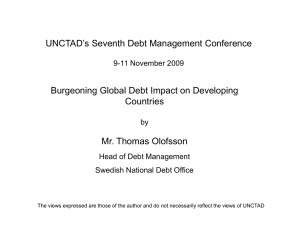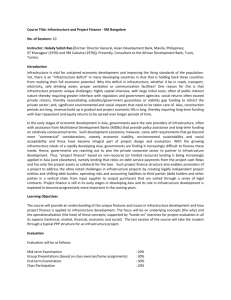the Presentation
advertisement
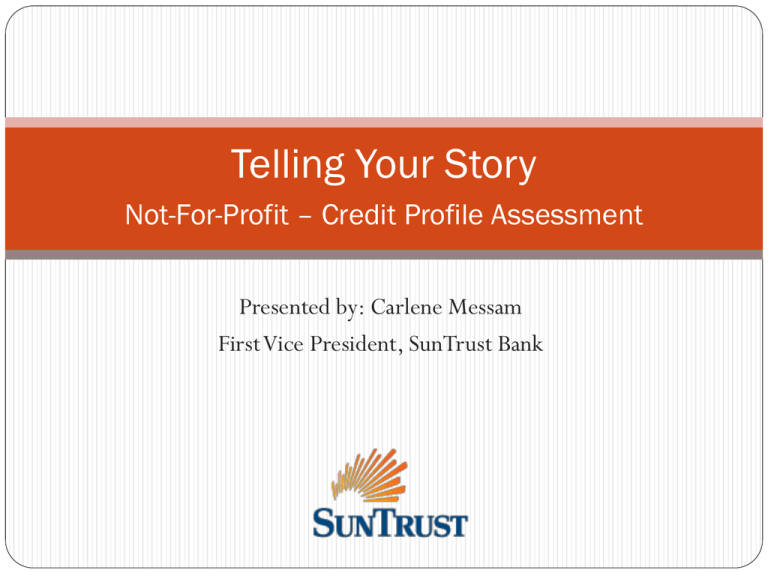
Telling Your Story Not-For-Profit – Credit Profile Assessment Presented by: Carlene Messam First Vice President, SunTrust Bank Agenda Types of Financing Porter and You Macro Considerations Client Specific Considerations Market Management & Governance Numbers Matter Food For Thought – Working with Financing Partner 2 Typical Financing Options Conventional Bridge Financing Public Debt Tax-Exempt LC Backed VRDN NBQ BQ New Markets Tax Credit 3 Porter & You What industry does the organization operate in? What are the specific dynamics of that organization (national, regional player, local trends)? Bargaining Power of Customers in that industry (who are their customers- including broader stakeholders and is their bargaining power high or low?) Bargaining Power of Suppliers in that industry (what are they selling? They may be supplying brainpower or education etc…) Threat of new entrants/Threat of substitute product- can someone come in and do it better? Competitive Rivalry Economic Cycle and Seasonality Impact on organization 4 Client & Market Considerations What is the organization’s niche, its unique attributes, competitive advantages/disadvantages? Does the business plan (or vision) match up with what we know about the industry and the client’s niche? How long has the organization been in existence and do they have a consistent, strong reputation? Have they been through several successful fundraising campaigns? Does the organization have a well established investment and endowment portfolio (if private school); Does the organization have one or two years worth of overhead needs in cash/liquidity position (if an association)? Could the organization survive a short-lived deterioration in strength of Board and/or staff? If there is an economical downturn, could the organization manage through it? 5 Management & Governance Board Management Does the organization have strong Does the organization have a strong Board involvement and oversight? Is the Board easily accessible by the Bank? Does the Board represent a wide variety of professional skills, influential community representatives, and persons with access to funding and inkind support? Are they knowledgeable of NFP inner- workings? Does the Board demonstrate willingness to fire ineffective NFP executive Leadership ? 6 and experienced management team? Does Management have an excellent relationship and reputation with the Board and community? Do they have a track record of executing strategies that enable the client to weather adverse conditions successfully? What is Management’s Philosophy? Financial Analysis Breakeven or better unrestricted operating profit Satisfactory expense management Comparison to peer group Stable and predictable cash flow Balance sheet liquidity Collateral options 7 Key Ratios Debt Service Coverage Ratio- 1.0x to 1.5x Unrestricted Liquidity Value to Funded Debt Ratio – 0.40x to 1.0x Unrestricted Liquidity to Cash operating expense ratio- 0.50x -1.0x Funded Debt/ Net Assets Ratio – 0.75x to 1.0x 8 Keys – Banking Partner Assessment Every Bank has a Unique Process. Relationship Matters - Get an understanding of how you will work with the Bank once the deal closes- relationships are important, not enough to be the lowest cost provider. Approval Process - Who does the Relationship Manager have to go to get the deal approved? Is it a local approver, out of market approver, committee process etc. Meet Senior Credit Officer, Regional President Be Pro-active on Story, Structure and Covenants 9 Q&A 10


